
Charleston certainly has its share of walls and fences–more than its share, perhaps. They fascinate me when I walk around Charleston with my camera. I wonder about their variety, the different expressions of them, and the reasons behind them. Many that were erected long ago remain for us to see.
Robert Frost has a line in his poem, “Mending Fences”, that reads “Good fences make good neighbors.” Probably the creation of good neighbors was one reason for them. Truth to tell, though, I’ve known neighbors to become exceedingly bad neighbors arguing about whether a fence is two inches over a property line.
In the early days of Charleston, perhaps there were palisade fences because of the native Americans nearby–I do not know. About 1700, a wall around the city– a much smaller city then than now–was begun as a defense against the Spanish and pirates. This was fairly short-lived, however, and had been pretty much removed by 1740.
Charleston began to expand outwards; what are now solid parts of the city were initially considered to be out in the country. Post and rail fences must have been common for containing horses and cows, as well as clarifying who owned what. The fence in the picture below may be a similar fence, though it’s certainly not Charleston.

I’ll bet that as things became a little more citified, people began to want fancier fences, like the picket fence below. These weren’t as well suited for containing livestock, but they were more attractive and were a way to show off. This Edisto Island house’s fence is probably a good example.

For people living closer to their neighbors, solid wooden fences tall enough to shield inhabitants from view became popular. The Buildings of Charleston reports that this was typical until the 1820’s, when walls became more popular than fences.
There must have been several reasons for the move to walls. They didn’t burn, they didn’t rot, they didn’t require periodic painting, and they were sturdier. Walls were better for reducing street noise. They lasted much longer. And they cost more–the builder could flaunt his wealth.
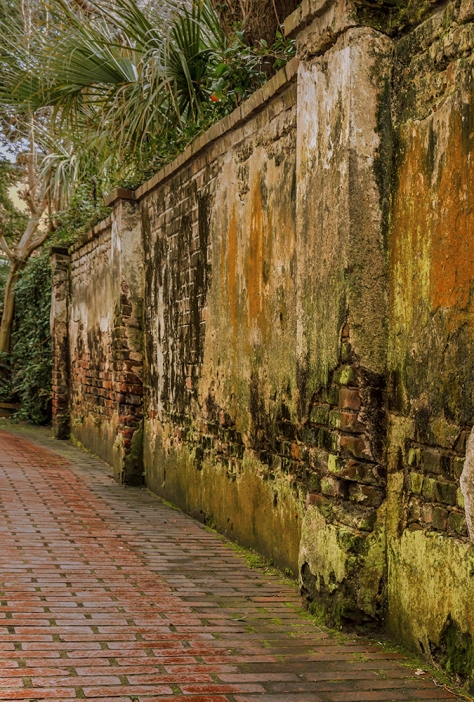
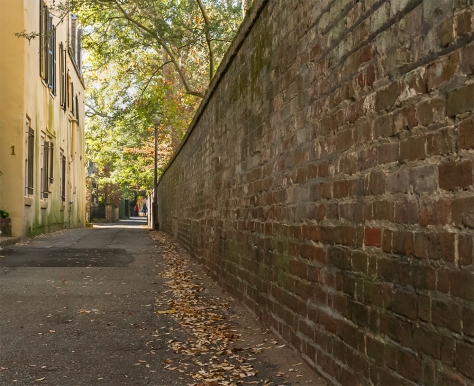
Walls also offered a new area for gardening and decoration.

Some were not built entirely of brick, but were topped by wooden or iron railings.
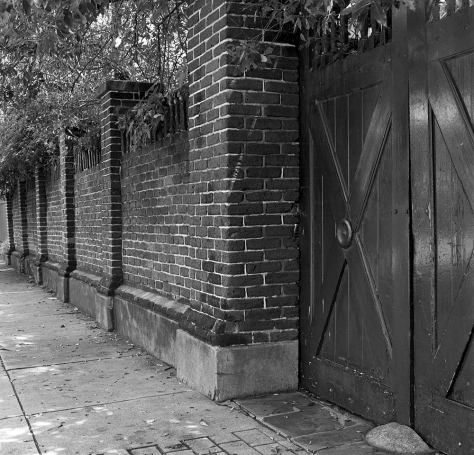
About this time. well-to-do Charlestonians, who had previously been comfortable with the slave majority, began to be more concerned for their safety. A sign of this would be the devices to discourage burglars placed around strategic areas of homes.
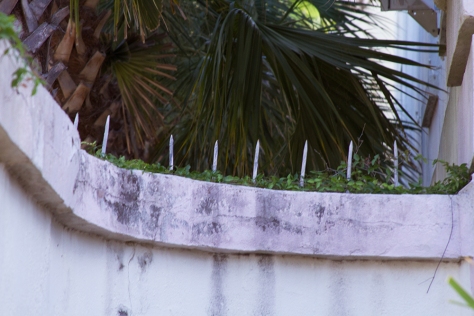

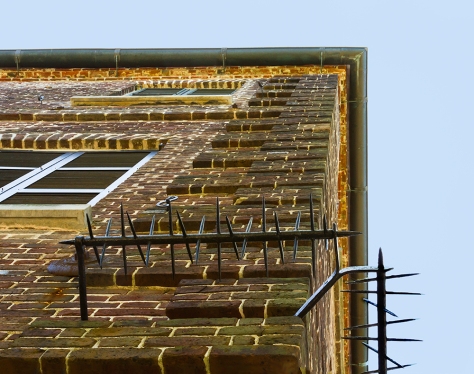
After the Denmark Vesey Slave Revolt plans were made public in 1822, concerns increased from fear of burglars to a fear of slave uprisings. Now walls and fences served as defensive protection for the whole home. Fences with spikes designed to make climbing difficult and dangerous appeared.

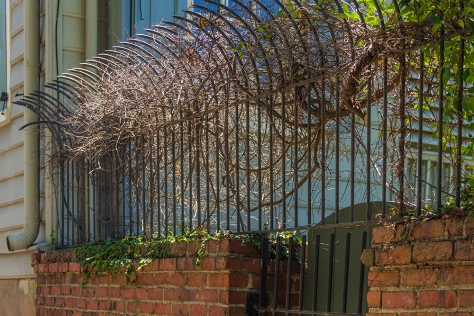
The most extreme example of these measures seems to be the Miles Brewton House on King Street. High walls are topped with iron spikes, and perhaps in other areas with broken glass.
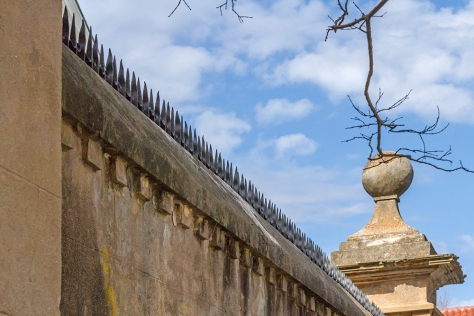
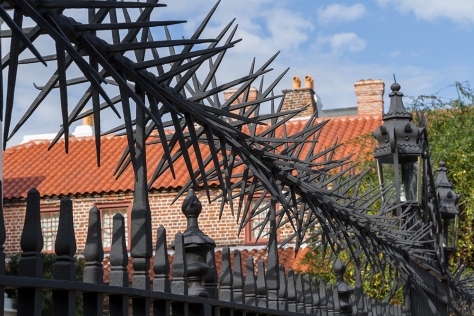
Towards the front of the house, there is a very aggressively spiked iron rail topping the iron fence. The Buildings of Charleston refers to it as a chevaux de frise. This term originally applied to logs with multiple pointed legs at different angles. They were used by Frisian soldiers to impede an enemy’s cavalry.
To me, the modern-day equivalent of this house would be a house surrounded with coils of razor wire.
When we think about antebellum Charleston, I think we tend to think of refined, well-to-do people living a pleasant and comfortable life. The fences and walls of Charleston suggest that this may not be accurate. They certainly must have spent a lot of time with uneasiness.
While we’re on the subject, I’ve not heard guides talk much about the people who designed and built the walls and fences, or how and where they lived. That would be a worthy topic for some tours, I think.
Photographs from